
Everything in this slideshow
-
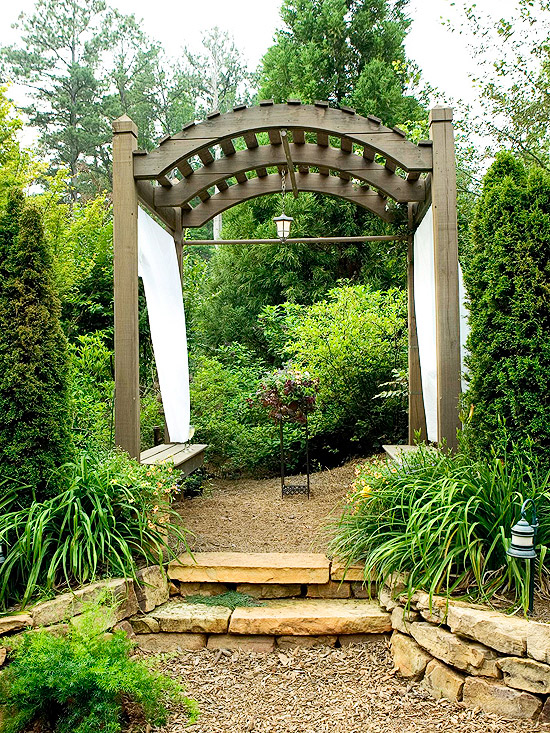
Brief Respite
A few added amenities dress up this simple wooden arbor.
- A wider-than-normal arbor offers enough space for built-in benches.
- A simple length of outdoor fabric provides seclusion and shields from the sun.
- A solar-power light fixture eliminates the need for running wiring to a small outdoor structure.
- Draw inspiration from the architecture of an arbor and repeat the elements in hardscape materials, such as the gentle curve of these raised beds that mirror the arbor’s lines.
- Arbors typically mark an entrance or transition to a space; this one directs visitors to a focal point and a fork in a path.
- Add more hardscape elements to your landscape with a raised bed.
-
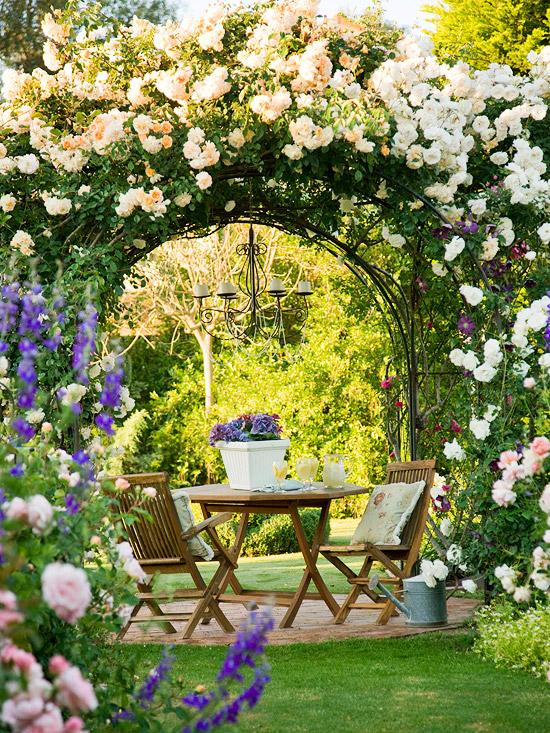
Rose Beauty
An arbor becomes a backdrop for a bounty of blooms.
- A deep arbor offers enough room to shelter a small table and chairs.
- With plenty of screened space from above, pavers define a section underneath the structure.
- Romance comes courtesy of elegant accents, including this delicate, detailed candlelit fixture.
- A profusion of climbing roses blooms from every angle; choose plants that will offer robust growth and vigorous flower patterns.
- Hide the base of an arbor with a flowering groundcover or dwarf shrub.
- Learn more about climbing roses.
- See more pictures of this landscape!
-
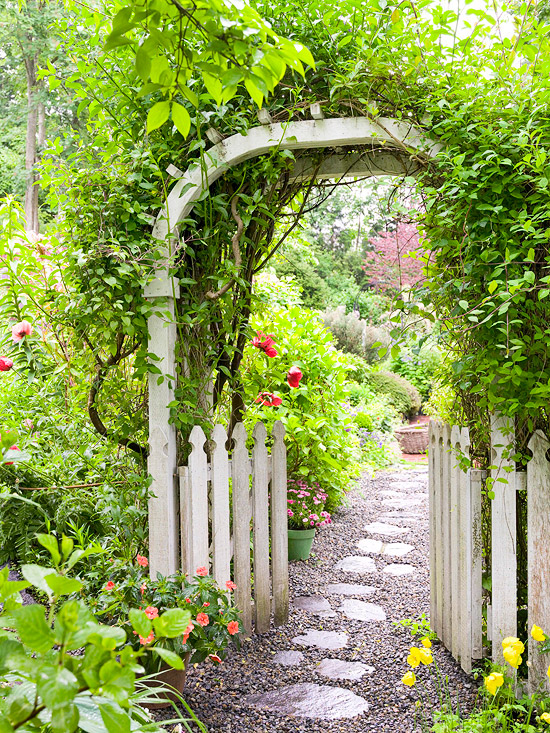
Carefree and Easy
A laid-back design and free-flowing plants establish a devil-may-care vibe around this arbor.
- Arbors can work in tandem with paths to establish a defined entry point. Here, the informality of the structure is reinforced by round pavers and gravel.
- Plants spill over the borders of the pathway for a sweet, cottage-style garden.
- Curves can either be traditional or casual; this arbor relies on a gentle swoop overhead.
- A robust vine rambles up and over the arbor.
- Typically a gate is a single piece; this one — divided into two equal portions — offers a distinctly different entrance point.
-
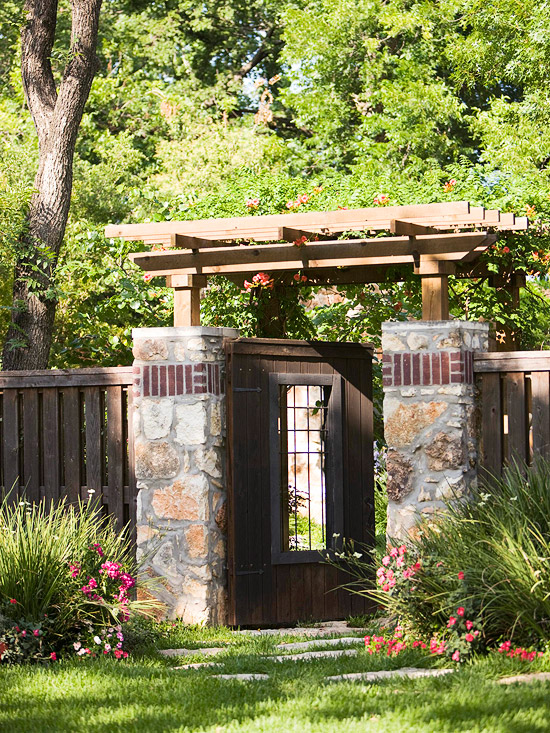
Traditional Beauty
Architecture and accents supply this arbor with classic flair.
- Doors or gates are often included as part of an arbor or trellis. Here, a center section of a metal grate relieves the mass of the wide door.
- Although all arbors have columns that support the overhead structure, there’s no need to use ordinary timbers or latticework. These columns nicely meld two types of brick for interesting detail.
- Geometry and material choices are key to enhancing the traditional style of the overhead section.
- Wood and stone are the two primary materials in this arbor and fence, but a slight flair in the construction of the fence creates visual variety.
- Randomly spaced pavers direct visitors under the structure.
-
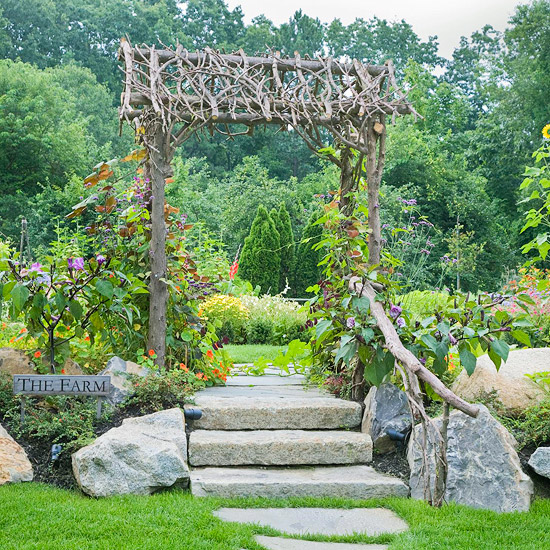
Appealing Arbor
A casually assembled structure offers a welcome to a garden.
- An arbor bridges the gap between a landscape’s expanse of lawn and a collection of flowerbeds.
- There’s a definite DIY feel to this arbor — various-sizes of supporting timbers, smaller branches as a rooftop — that complements the casual nature of the garden.
- Other elements enhance the style of an arbor, as with the gentle curve of the branch-turned-handrail.
- Large boulders act as informal edging and design elements in the landscape.
- Flowers and shrubs can be used to hide an arbor or to gently transition from built structure to plants and flowers; this one does both.
-
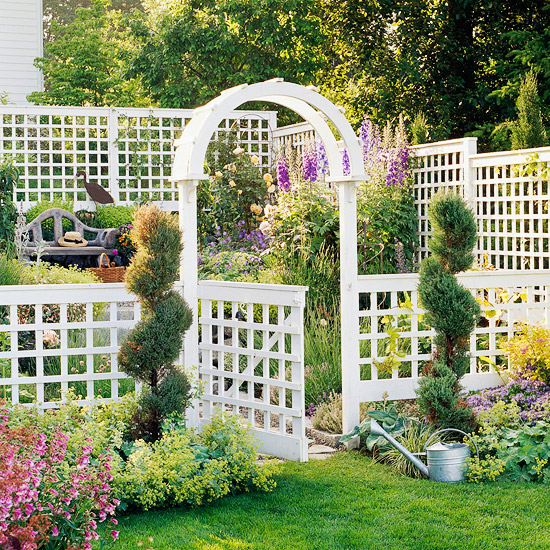
Classic Charm
An arbor relies on timeless style for good looks.
- Equal parts arbor and trellis, geometrically spaced latticework gives a pretty structure some formal style.
- Many arbors function as a support structure for a gate; this one uses an entrance to designate the border of a garden.
- Plant materials can mark an area around an arbor, as with these gently curving topiaries.
- Many times a path leads up to, under, and past an arbor, but in this structure, the path begins only after passing into the garden.
- Paint color can brighten and lighten an arbor, or make it recede into the background.
-
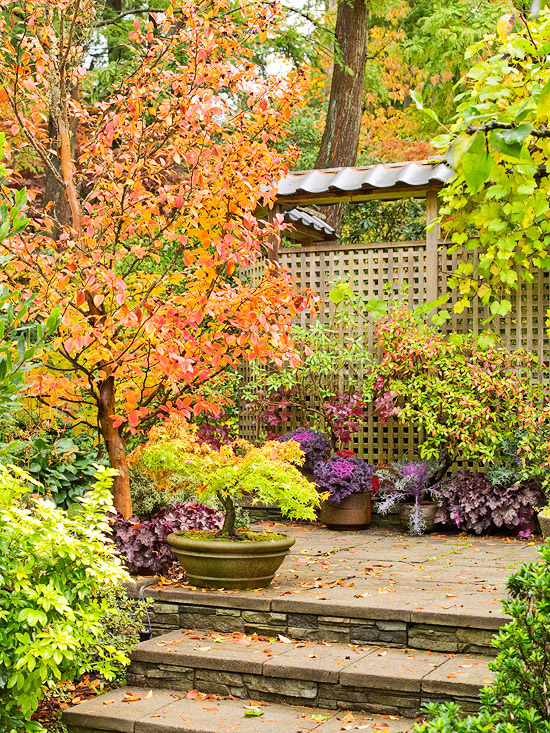
Arbor Aesthetics
Clean lines and careful design create a stylish arbor.
- Trellises are often used to support growing plants, but this one’s primary purposes are to shield the view and offer a border for the yard.
- A subdued color scheme used on the trellis blends in with the warm hues of the foliage and flowers in the surrounding garden.
- A slim, undulating metal roof — a detail reminiscent of the garden’s Asian-influence design — tops the trellis.
- Container gardens are a fantastic way to provide both color and structure.
- Left to weather gray, a trellis will continue to recede into the surroundings.
-
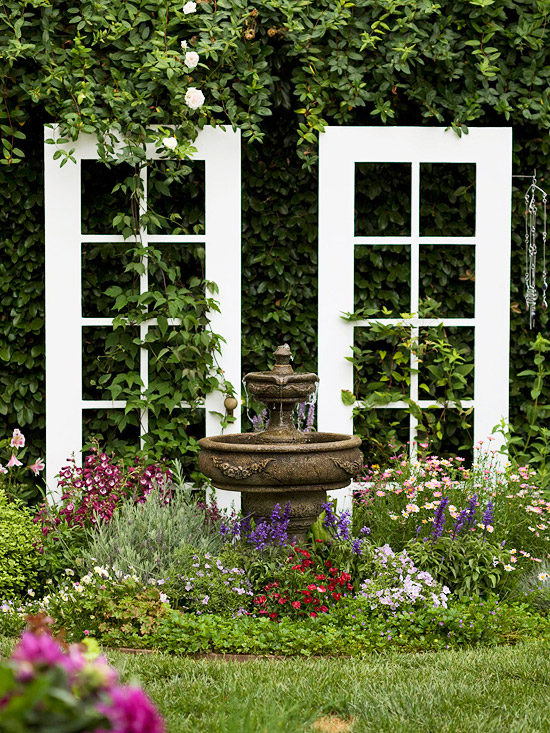
Double Duty
A set of doors finds new life as a trellis.
- Repurposed materials, such as two wood doors, can provide the perfect structure for a nontraditional trellis.
- If a trellis is to be located close to a fence, place it with enough space behind the structure for vines or other plants to grow up and around.
- In addition to supporting plants, trellises can serve as a backdrop for another focal point, such as a fountain.
- If sturdy enough, a trellis can also support low-weight garden ornaments, such as a set of wind chimes.
- Learn more about using salvaged landscaping materials.
-
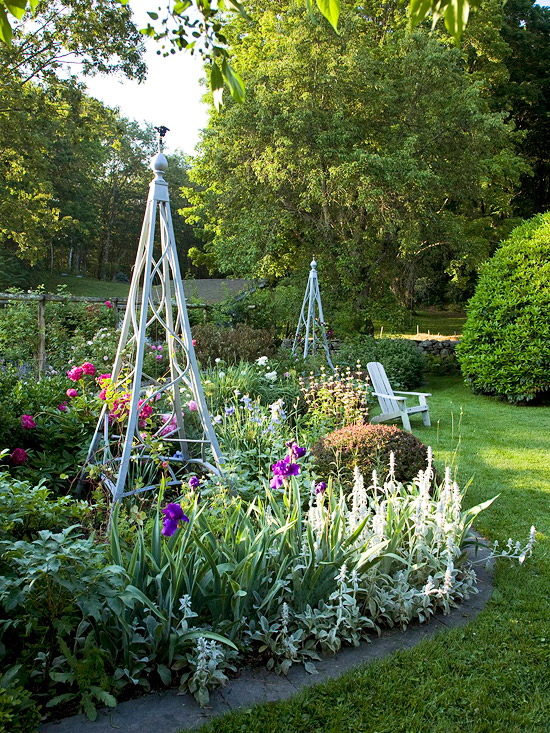
A Tuteur Tutor
Pint-size trellises offer flexibility in a garden bed.
- Trellises are called many different things, including tuteurs; this version — a pyramidal structure — is often included in a garden in order to train climbing plants.
- If a trellis or structure is smaller, include several in a garden to keep them from getting lost.
- In deeper garden beds, trellises or tuteurs can mark the placement of particular plants.
- In these beds, a collection of flowering plants nearly camouflages the base of the structures.
- The undulating curves of these tuteurs lend themselves to the garden’s cottage style.
-
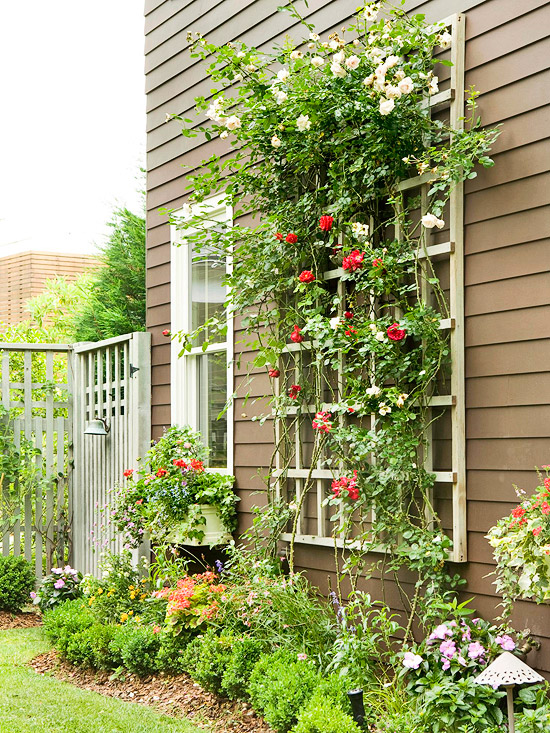
Trellis Trail
A simple structure offers ample space for climbing plants.
- A trellis can be freestanding or attached to another structure; if it’s the latter, a trellis and plants can help to break up large expanses of exterior wall space.
- If a trellis is attached to a building, it should be propped far enough away from the structure to allow portions of plants to vine around the slats.
- The beauty of many climbing plants is that they can be grown either in the ground (as with this plant) or in containers.
- Colors and plant types that grow up a trellis should be repeated in the surrounding landscape, such as in this window box.
- Consider refinishing needs — such as repainting — before choosing materials and colors for a trellis.
-
